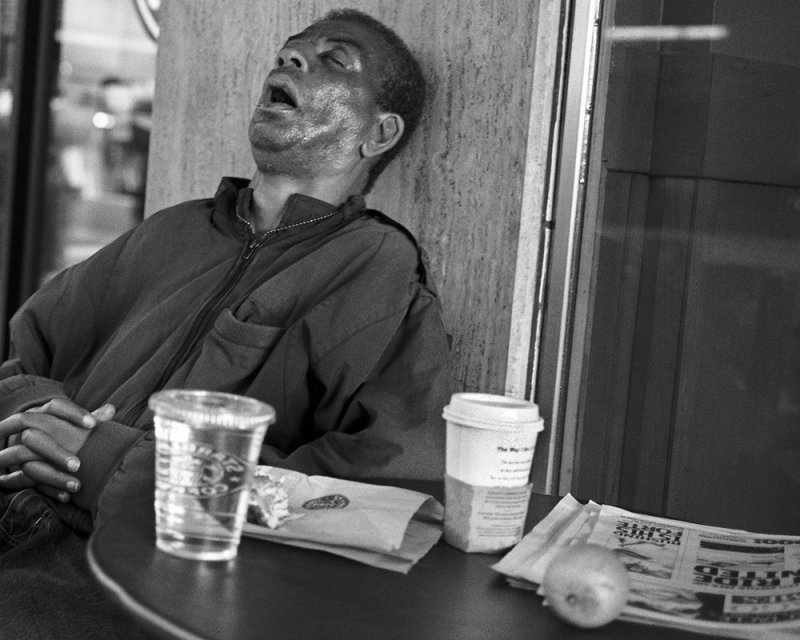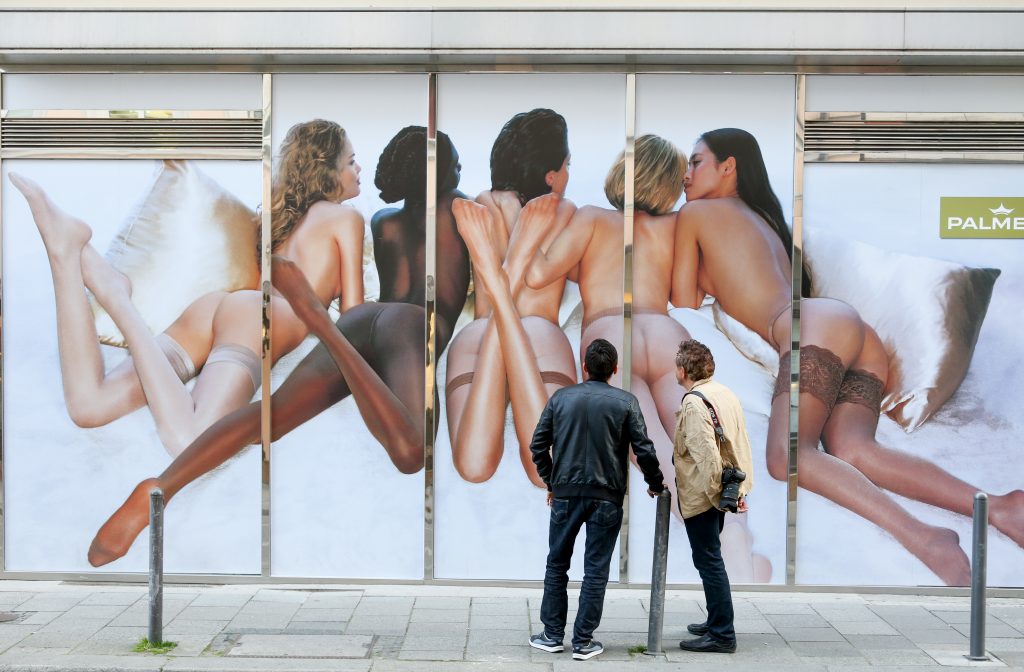The Biz: Art Director Kits and The Man in the Hathaway Shirt
In the last installment of The Biz, I recalled origin stories about my life in the New York ad agency world, including Schelp-Rock, copywriters, and would-be vampires. In the continuing saga of agency life, here’s an ode to a shirt ad that inspires even today…
 |
| *Read the copy below… |
Back at the agency I was buddies with one of the creative directors. Martha was in her forties and I was in my twenties. She was tough as nails, but also had a glow of a beauty pageant queen. She hated her name because it wasn’t glamourous and some would brand her as “old” before even speaking with her. I could see her cut down a vendor at the knees and then strut down the hallway like she was working the catwalk. She was amazing when it was the 11th Hour and a campaign was due. Together, we never missed a deadline. She gave all of the credit to her Creative Director Kit that sat on her rickety bookshelf that sat opposite her drafting desk.
What was in that Creative Director Kit, you ask?
The kit was a curated collection of childhood memories: bobbleheads, vintage cameras, Charlie Brown lunch boxes, industry awards, Star Wars action figures, a View-Master in its original packaging, and Pez dispensers. While other non-creative departments often gossiped about how the kit was an overreach, i.e., a middle finger to the non-creatives, inside the department, we used it as the springboard to the Mendoza Line of the minimums of greatness.
Over the years, I’ve noticed that the greatest advertising creatives I worked with give their Creative Director Kits deep thoughts and carefully ensure that additions and subtractions to these shelves aren’t taken for granted. While their desks are disorderly messes, their muse art grease the wheels of capitalism and advertising art. I chronicled my kit a while ago here.
In Martha’s case, on the right partly hidden by her three Clio Awards and wilted bamboo leaves were a few classic print ads—some hers and some clipped from the pages of Life Magazine or Sports Illustrated. One ad that always caught my eye was powerful image of a man with an eye patch that rested upon five chunky paragraphs of copy: “The man in the Hathaway shirt.”
This legendary ad, conceived by David Ogilvy in 1951, is arguably one of the most inspiring pieces of advertising copy ever conceived and the pre-curser to non-sequitur campaigns such as Dos Equis “The Most Interesting Man in the World” and all of the Geico mascot ads. On eBay, there are dozens of framed reprints for auction with sales reported as “brisk.” The origins of the ad are a lesson in serendipity mixed with thinking outside of the box.
 |
| The man behind the Hathaway Shirt: Ellerton Jette |
Ogilvy was on the way to his Hathaway shirt photo shoot when he stopped at a Manhattan drugstore and was struck by the jar of 50-cent black eyepatches. He bought a few and became a trailblazer for a brand new style of rogue advertising. Ogilvy was under a tight $30,000 national advertising budget set forth by Maine-based CF Hathaway, a new client who had never advertised before. He knew something out of the ordinary was called for but never expected that the eye patch would become part of advertising lore. He suggested to his photographer, “Just shoot a couple of these to humor me. Then, I’ll go away and you can do the serious job.”
The eye patch became the talking point, the buzz of the fashion industry. Without it, the Hathaway campaign was simply another shirt ad with a fit, well-dressed man in an upscale tailor shop. With the eye patch, the ads had a hidden story that made the reader wonder what really happened to this man. Where was he? What did he get into? It appealed to both women and men. The perfect ad.
The first media placement was in the New Yorker, clocking in at over 10 per cent of the total ad budget ($3,176, or the equivalent of $31,288 today). The impact was immediate. Seven days later, every Hathaway shirt in the city was sold out just seven days after the ad appeared.
“The man in the Hathaway shirt” is a master course in copywriting. It’s an ad for a short but created a myth and a legend in one fell swoop without ever deviating that the shirt is the primary reason that three thousand dollars was being dropped on a single magazine ad that reached approximately 350,000 people in 1951. Even more startling is that this 247-word advertising manuscript is almost impossible to put down. Try finding an ad now this long in our short-attention-span world. Even today, the copy flows like a novel would, conjuring instant pictures of the finest that a shirt company could offer:
The man in the Hathaway shirt
At long last American men are begging to realize that it is ridiculous to buy good suits and then spoil the whole effect by wearing a cheap, mass-produces shirt. Hence the growing popularity of Hathaway shirts, which are in a class by themselves.
Hathaway shirts wear infinitely longer — a matter of years. They make you look younger and more distinguished, because of the subtle way Hathaway cut collars. The whole shirt is tailored more generously and therefore more comfortable. The tails are longer, and stay in your trousers. The buttons are made of mother of pearl. Even the stitching has an ante-bellum elegance about it.
Above all, Hathaway make their shirts of very remarkable fabrics, collected from the four corners of the earth—Viyella and Aertex from England, woolen taffeta from Scotland, Sea Island cotton from the West Indies, hand-woven madras from India, broadcloth from Manchester, linen batiste from Paris, hand-blocked silks from England, exclusive cottons from the best weavers in America. You will get a great deal of quiet satisfaction out of wearing shirts which are in such impeccable taste.
Hathaway shirts are made by a smaller company of dedicated craftsmen in the little town of Waterville, Maine. They have been at it, man and boy, for one hundred fifteen years.At better stores everywhere, or write C. F. Hathaway, Waterville, Maine, for the name of your nearest store. In New York, telephone MU 9-4157. Prices from $5.50 to $25.00.
Ogilvy on the campaign: “For some reason I’ve never known, it made Hathaway instantly famous. Perhaps, more to the point, it made me instantly famous.” It also made the eye patch famous.
The patch started popping up in other company’s ads featuring eye patches on cows, babies, and dogs. Ellerton Jette, Hathaway’s president, was laughing all the way to the bank having being the genius of deferral, allowing Ogilvy to dream up a campaign unencumbered, promising never to change a word of his copy or fire the agency.
Over the years, I’ve convinced colleagues to take a deeper dive in the Creative Director Kit found in every creative’s office because ads like Hathaway truly puts things in perspective. As the old golf saying goes, you “drive for show and putt for dough. And while it is true that the big drive off the tee brings the oooooooooooo’s and aaaaahhhhhh’s, the short game is the hard work just like the Big Idea is the hard work and when you land it, it makes you indispensable.
So yes, “The man in the Hathaway shirt” sets a very high creative bar. If you find the ad sitting in the in a creative director’s office, rest assured this is someone who aspires to greatness. Someone who realizes their duty is much more than their desk or their paycheck. Someone like Martha. A nod to the diligence and creative energy of yesteryear.
–>










Leave a Reply